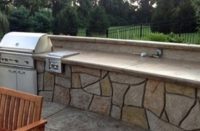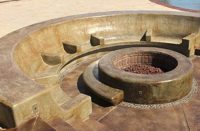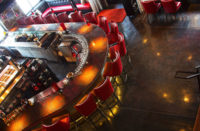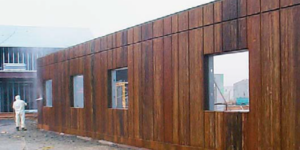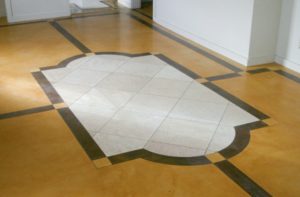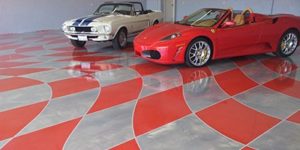Jeff Kudrick, product manager at J&M Lifestyles LLC, is always looking for innovative illusions to create in concrete. His latest endeavor was coming up with more traditional designs for vanities and countertops, as those make up the bulk of J&M’s sales. One solution? Concrete that looks nearly identical to wood.
“It started with a highly distressed wood-plank vanity top that displays in our showroom — a customer came in and had to have it for her kitchen,” Kudrick says. “We hadn’t even started thinking about the details of a larger mold system for the countertops. Once we had that little push everything started snowballing.”
The result was a product that looks so similar to wood that when cabinetmakers visit J&M’s showroom they sometimes need to take a look underneath to be convinced it is actually concrete.
“It looked and felt so real that unless it was pointed out that it was concrete and not wood, it was overlooked completely, because the customers didn’t even think it was an option — they were here for concrete,” says Michelle Radley, managing partner at J&M. “However, wood with the durability of concrete opened up a lot of doors for our customers.”
 The first “wood” countertop was placed in a New Jersey country kitchen. “The kitchen has a lot of large timbers and varying treatments of cabinets,” Kudrick says. “The concrete wood detail in the counter tied the varying elements of the kitchen together and blended in perfectly.”
The first “wood” countertop was placed in a New Jersey country kitchen. “The kitchen has a lot of large timbers and varying treatments of cabinets,” Kudrick says. “The concrete wood detail in the counter tied the varying elements of the kitchen together and blended in perfectly.”
In keeping with the rustic theme, Kudrick’s team incorporated hand-hammered nails and iron strapping. They even used actual horseshoes for trivets. “We had to make voids to go into the mold that would be an exact match for the trivet horseshoes,” Kudrick says.
In total, the team created six countertops for the kitchen project. “Everyone who has seen it wants it,” he says. “Many projects are in the making.”
For an island countertop, Kudrick wanted to break up the wood look with a unique sink designed to look like rock. Fitting the boulder sink, a J&M signature concept, into a gap in the “wood” countertop was one of the biggest challenges of the project.
Another challenge was matching the colors in the countertops to the pre-existing windowsill. “We had to create the countertops after the fact, and we were able to match them exactly,” Kudrick says.
Now that their first “wooden” concrete countertop project is complete, J&M is busy working on automating the process to teach it to other industry professionals. Their Infinicrete mix allows for pouring the molds with no fill, which would interfere with the wood grain. They also used Pro-Seal Ultra Shield II-A, a penetrating sealer that is very stain-resistant without compromising the feel of the “wood.”
“This is not a process for the impatient or faint of heart. Any mistake in the many steps of concrete would renders the slab useless,” says Radley. “Repairs are not an option. But the rewards far outweigh the costs.”
(973) 668-5057
www.jmlifestyles.com
